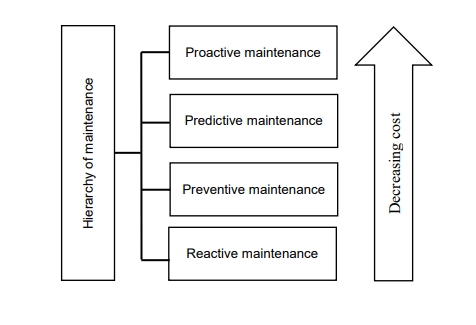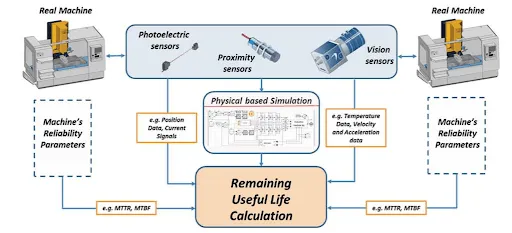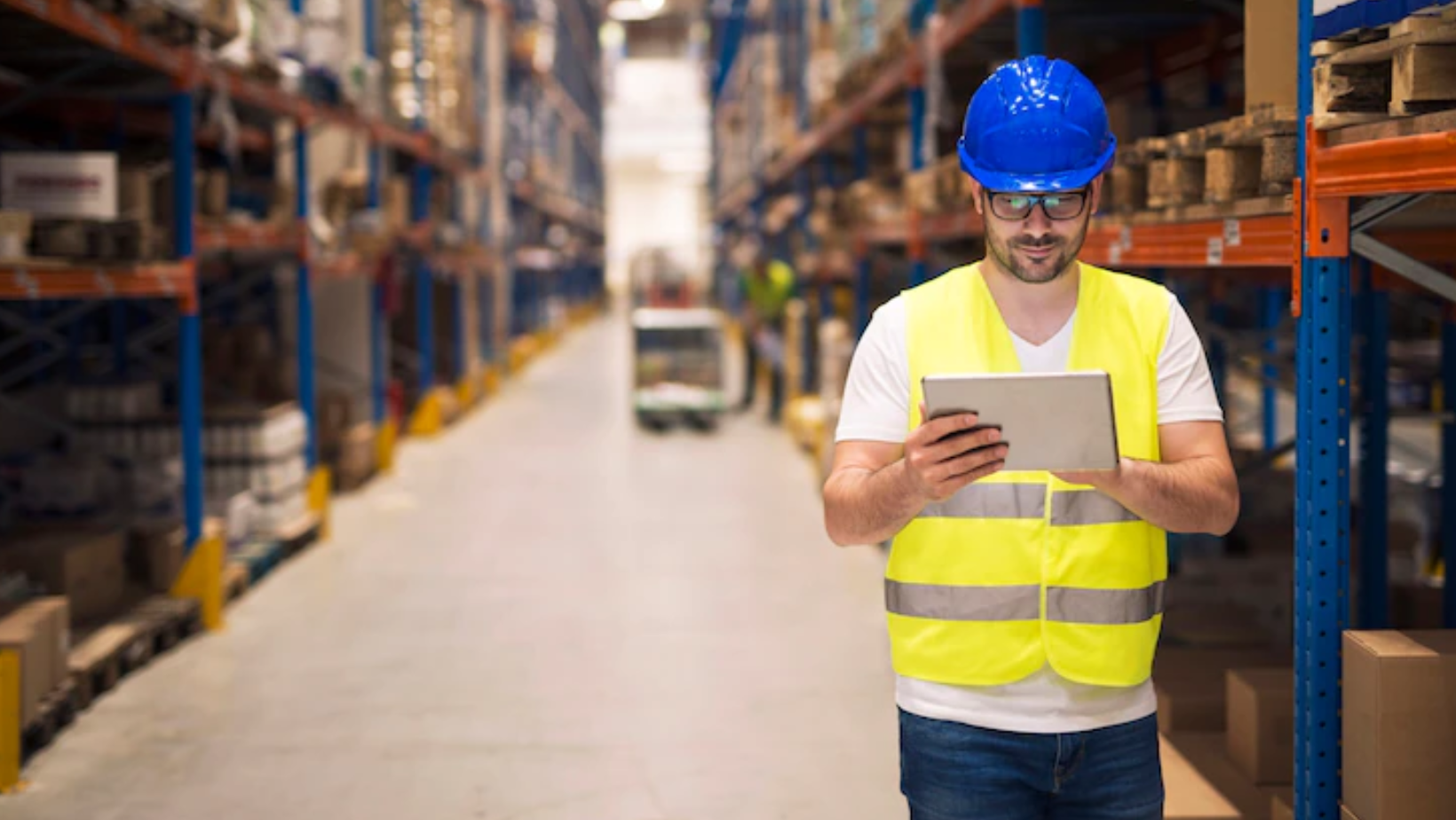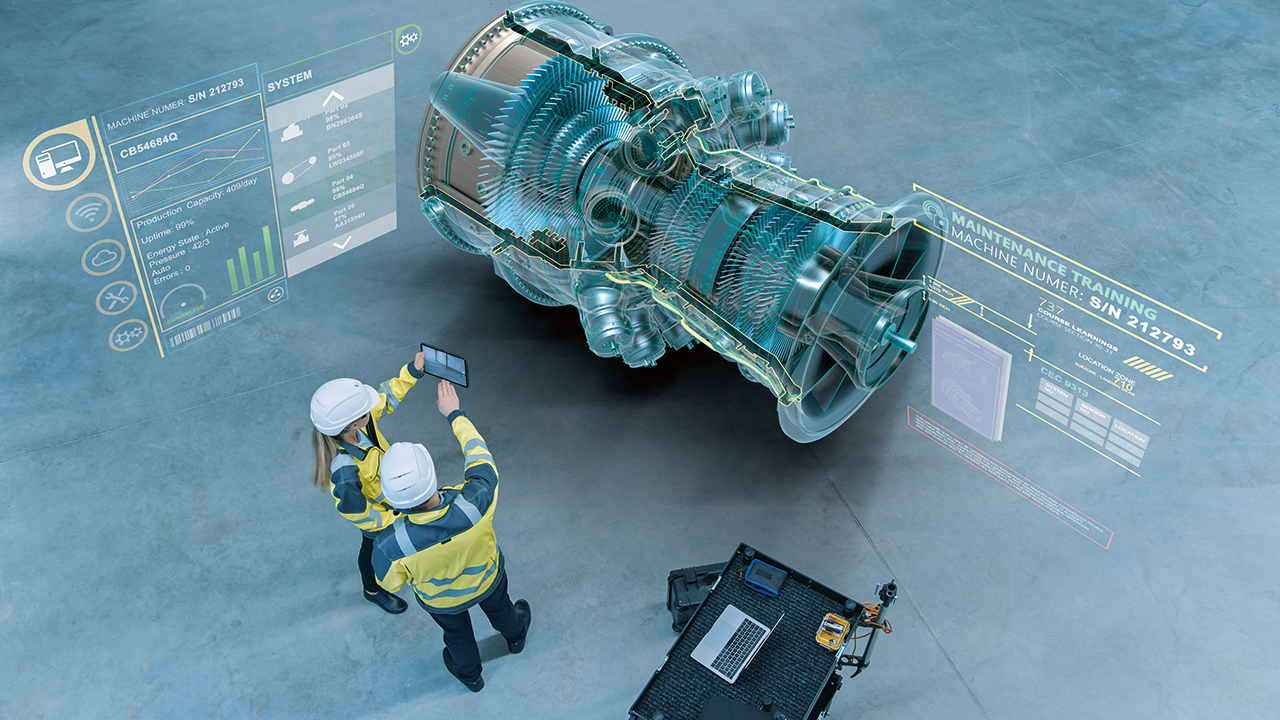Digital Twin, Predictive Maintenance
Thanks to precise, granular sensor data, artificial intelligence, high-performance computing platforms, and tailor-made digitalization strategies, the digital twin system is emerging as an extremely useful tool.
This precise knowledge of asset conditions has opened new avenues for many industries to merge the virtual and real-world data, thanks to the holistic view of the entire life cycle of a machine or system generated by digital twins.
Digital twins analyze and simulate the life cycle of an object system or process through captured sensor data synchronized between the object and its twin, which is then visualized in real-time via an interface.
This functionality enables users to get a truly on-demand solution and optimize performance monitoring in process-oriented production systems while offering new possibilities for annexing more services and products in the sense of Industry 4.0.
Enabling the visualization and analysis of data in real-time, a digital twin uses a virtual model to accurately reflect an actual physical object, a system of components, and linkages within systems-of-systems. All of the information consist of real-time data gleaned from algorithms and sensors. Because of this digital twins allow us to merge real and virtual data.
Indeed, with a digital copy of your assets or systems, you can run real-time simulations by real users to accurately reflect and understand their performance in various real-world scenarios.

As the key innovation of Industry 4.0, the preventive maintenance strategy has codified new procedures that heavily rely on condition-based routines since plant operators can precisely determine when systems need to be serviced.
It’s safe to say not all companies have made this transition. In fact, a survey by Gartner showed that “by 2020, at least 50 percent of manufacturers with annual revenues in excess of $5 billion will have at least one digital twin initiative launched for either products or assets”.
This means that many companies still rely on a reactive maintenance policy where the affected equipment or plant is only serviced when an error or problem has already occurred.
This form of maintenance is counterproductive and inefficient in part because interruptions and sporadic equipment downtime get lots of attention, this leads to a higher cost for the company. In fact, reactive maintenance is so wasteful that repair workers often do not have time to perform preventive maintenance.

By taking advantage of information-driven cognition in digital twins, engineers can therefore implement a predictive maintenance strategy with minimal downtimes in their machines or systems. This is because AI-based algorithms for predictive maintenance are not only able to detect errors when they occur, but also reliably predict future potential malfunctions. Some of these probabilistic simulation include errors like wear and tear, stress, cavitation, corrosion, malfunctions, and bottlenecks.
In this form, the digital twin goes far beyond than a machine learning solution. Rather, several heterogeneous sensor data sources have to be merged and synchronized to improve error prediction while drawing highly complex relationships that an engineer could never be cognizant of.
This mix of accuracy and computational speed represents a major methodological and technical innovation since multidimensional sensor data generates thousands of comparison values that can be incorporated into the design of the twin with the help of machine learning and physics-based simulation models.
Beyond predictive maintenance, machine learning algorithms can also focus on individual components and their remaining lifespan.
Also known as Remaining Useful Life (RUL), it is an integral part of predictive maintenance which helps engineers to find ways of extending the usage of components thereby reducing costs through increased product reliability and improved performance.

In other words, RUL is a unique tool that uses physics-based simulation models and machine learning in order to obtain unprecedented insights of your assets in order to determine the right actions to take. The advantage of incorporating the physics-based model is that, unlike machine learning, it uses the laws of physics to design the digital twin.
The result, lower operating costs, fewer production bottlenecks, and a longer lifespan of individual components.
Let’s say you want to simulate hypothetical future scenarios and monitor how an energy plant will behave when specific inputs are introduced to mechanical, hydraulic, thermal, and electrical components.
Engineers can intentionally simulate faults in a risk-free environment on these sensitive parameters to obtain information related to load variations or even peak efficiency on turbines and motors. Consequently, they can record certain fault conditions and pre-classify anomalies in the real plant using an algorithm that is trained with this simulated data to not only recognize malfunctions in the system, but also to accurately classify them.
Likewise, in the marine sector, digital twins have particularly made major inroads in the shipbuilding industry and marine navigation. This impact cannot be overstated. In such a complex environment, they have quickly improved operational efficiency by reducing the dependency on prototypes for the construction of large marine equipment by instead using immersive visualizations that gives contractors and engineers insights on parameters like the choice of materials, stability, deadweight tonnage, turbine performance and degradation, ergonomics, and even shipyard layout.
With such detailed insights in a digital twin, there has been an overall reduction of machine downtime and an increase in productivity since each of those parameters can be targeted to identify malfunctions, potential bottlenecks, and error-prone processes, resulting in predictive quality assurance control.
Summary
It is evident that predictive maintenance policies are the best tools for monitoring and inspecting your assets. The efficiency gains are huge. An observation aptly noted in the Gartner report in which they assert that, “As IoT investments are relatively new, most companies have plenty of “low hanging fruit” cost-saving opportunities to pursue, such as predictive-maintenance on commercial and industrial assets like elevators or turbines, and optimization of processes such as increasing manufacturing yield”.
Another study by PWC estimated that predictive maintenance goes beyond reducing costs and Prolonging asset lifetime. Other factors driving this change include:
- Improving the safety and health of staff
- Meeting environmental regulations and accelerating sustainability
- Enhancing customer relations
In all, from this analysis, it is obvious that predictive maintenance is here to stay. It will no longer be another additional expense companies have to factor in, but instead, it will be the cornerstone and an essential building block of Industry 4.0.
Request more info about our Asset Management Solutions



